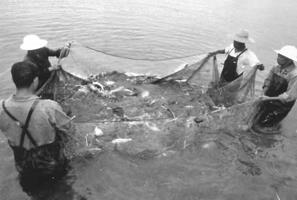Market analysis: Aquaculture in China
Fish consumption has always been considered as a delicacy in China. Beginning as a family business with experience passed over from father to son, fish culture had to quickly evolve in order to satisfy the richest’s demand. From 1949, China began to expand the aquacultural market using large scale production techniques (artificial breeding of carps, seaweeds, mollusks …). Thanks to China’s new scientific and technological breakthroughs, the aquaculture in China has been steadily growing since the ’50, effectively contributing to improving food supply as well as generating employment and income for the Chinese.
Chinese aquaculture is leading world production
Nowadays, China holds the world’s largest aquaculture, supplying two thirds of the global fish production, according to the OECD FAO 2013 Agricultural Outlook. One reason behind the prosperous aquaculture in China and the humongous Chinese fish production might be China’s very advantaging geographical situation itself: holding a diversity of climates and water types thanks to its large surface, the Chinese territory enables the culture of a vast range of fish, in both marine and freshwater aquaculture, though production still stays concentrated in the Eastern Riverside and in coastal provinces. The Chinese government’s 5 year plans and specially adapted policies, such as a tariff reduction policy on a range of fish and mollusks to boost the market, as well as a zero-growth policy on marine fishing industry to protect the environment, might also register as a helping factor for the market’s growth. In any case, results show the efficiency of the aquacultural in China: freshwater production has not only been on a steady 6% growth from 2007 to 2012, but has also encountered a 7% year-on-year rise in 2013. And it’s still expecting growth, according to the OECD.
Consumption of fish in China
 Being the world’s largest fish consumer with 3.19kg per capita (2013), the Chinese domestic market keeps developing : an emerging middle class that keeps asking for seafood (white meat, regarded as a delicacy), as well as a fish consumption trend in rural areas, mix it all together and it creates an increasing domestic demand, which somehow worries fish producing companies. The reason is that increasing domestic demand should mean growing local market; however that would be forgetting the Aquaculture in China has main weaknesses:
Being the world’s largest fish consumer with 3.19kg per capita (2013), the Chinese domestic market keeps developing : an emerging middle class that keeps asking for seafood (white meat, regarded as a delicacy), as well as a fish consumption trend in rural areas, mix it all together and it creates an increasing domestic demand, which somehow worries fish producing companies. The reason is that increasing domestic demand should mean growing local market; however that would be forgetting the Aquaculture in China has main weaknesses:
- First, food safety, which is a concern to every Chinese Citizen. After many headlines about farmers adding forbidden antibiotics and chemicals to boost the fish’s anti-disease ability, Chinese fish is believed to be detrimental to health and many Chinese, as well as foreigners, have faltering trust towards it ; preferring to turn to imported goods.
- Another weakness about the Chinese fish culture market is sustainability: balancing domestic water shortage with growing water demands for China’s industrial growth is becoming harder and harder, but accurately leveraging the development of the market is a concern that needs to be kept in order to keep the ecosystem and the environment safe.
Despite its weaknesses, Aquaculture in China is still going strong and is still expecting growth: with innovations in R&D and government policies targeting farmers’ education to help resolve food safety concerns, the market is believed to have continuous increase in production, trade and consumption from 2014 to 2022, although with a slower growth rate (3.5% from 2013 to 2022, as opposed to the 5.5% growth rate from 2003 to 2012, according to the OECD).





